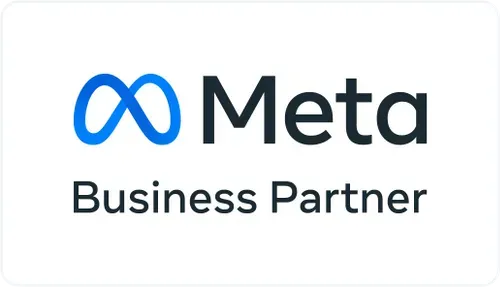Search Engine Marketing – A Complete Guide
- Sep 24, 2019
Here is a guide we have for you to paid Search Engine Marketing: –
I can bet you must have once your life wondered what Search Engine Marketing is then let me tell you that you are not alone. You might come across many terms in digital marketing that might sound similar or have similar definitions. Herewith these posts we will clear all your confusions.
Here we will have a deep dive into the meaning of SEM and what best practices you must follow to execute successful paid search marketing strategies.
Following are what we are going to cover here: –
- What is SEM?
- What is the difference between search marketing, SEO, SEM, and pay-per-click marketing?
- SEM fundamentals
- SEM platforms
- Types of SEM keywords
- SEM targeting
- SEM account structure
- SEM ad copy
- The SEM ad auction
- SEM best practices
What is Search Engine Marketing?
You may call it SEM or Search Engine Marketing. This is the act of using paid strategies to make your post’s search visibility increase. Once upon a time, it was so that the term Search Engine Marketing was used to describe both search engine optimizations as well as paid searches. But today it almost only refers to paid search engine marketing.
“SEM, or search engine marketing, is the act of using paid strategies to increase search visibility. Brands pay for ads to appear as search results on search engine results pages.”
We also know that with SEM brands also pay for ads to appear on their search results on the search engine result pages (SERP’s). With this, they target selected keywords so that when the user searches for those keywords there appear brand ads. The brand gets charged for it only and only if the user clicks on that particular ad.
On any of the search result pages, we can find these paid search ads. Typically, at the top and the bottom, we can find these paid placements. On the search result pages where all the results to our search appear they give an “Ad” designation below that so as the users know that these are paid placements.
Sometimes it may also happen that ads might appear with products in a featured carousel.
Search Marketing, SEO, and SEM: What’s the Difference?
To fully know, understand and answer the question “What is SEM?” it will be of great help if we know the difference between SEM and other term related to search marketing.
Search Marketing
Search marketing is that umbrella term that refers to any tactics that the brands use to increase their search visibility or should say the brand appears more frequently in the search result. In this, we might include a paid SEM strategy, an organic SEO strategy or maybe at times.
Search Engine Optimization (SEO)
Search Engine Optimization or as we call it to be SEO uses certain tactics that organically improve visibility in the search result pages. With SEO’s they tend to earn placements organically and prominently in search engines unlike SEM’s that pay to earn placements in the SERP’s. As we know SEO’s give us organic results, so they don’t have the designation “Ad’s” on their results. They are earned and not paid.
Pay-Per-Click (PPC) Marketing
Whenever we try and answer the question “What is SEM?” we tend to come across this another new term Pay-Per-Click Marketing or PPC.
It is a paid strategy where a brand creates an ad and which changes as and when the users click on it. When PPC shows ads in our search result it means it is related to SEM. However, it does not always happen that all PPC is related to SEM.
It is not considered SEM when PPC strategies are used on other channels other than search. For example, PPC can be used on sites that support digital ads like Promoted Tweets or Facebook Ads. It also includes Google display ads in which the brands are changed when the user clicks on banner ads on the website.
As we consider PPC one of the tactics of SEM, at the same time it can refer to social or display marketing.
SEM Fundamentals: Terminology, Platforms, and Tactics: –
So far, we’ve covered:
- What is SEM?
- What is the difference between search marketing, SEO, SEM, and pay-per-click marketing?
Next what follows we will be looking at SEM Fundamentals: Terminology, Platforms, and Tactics that we can see are related to the paid search engine marketing.
SEM Platforms
It is a platform where search engines can place their search ads, which will be displayed as and when the user performs a particular search.
Most widely used SEM platforms are Google Ads. As we are aware that there are billions of searches done on google in a day so this might help us get in front with the largest online audience.
Bing Ads claim that they connect with over 3 million searchers that Google can never reach. They put up their ads on their partner sites i.e., Yahoo and MSN as it helps us to connect us with the searchers who are not using Google searches exclusively.
Types of SEM Keywords
These are those keywords that are terms and phrases that target our search engine marketing campaigns. They see our ads when the searchers use these keywords. For example, if your campaign targets the term “virtual assistant,” your ad may show when a user searches for that phrase.
When we start with our SEM campaigns, we must choose the keywords that we want to target and/or want to avoid. Following are four types of keywords we use in SEM campaigns: –
- Broad Match Keyword- these define target variations of a term. There are singular or plural form misspellings, stemming, or synonyms of the target term that include similar forms. For example, when targeting the broad match keyword virtual assistant, a campaign may also target virtual assistants, online assistant, and virtual team.
- Phrase match keywords- this target the exact phase, plus any phases that have words coming before or after the target keywords. For example, when targeting the phrase match keyword virtual assistant, a campaign may also target the best virtual assistant, find a virtual assistant, and hire a virtual assistant.
- Exact match keywords- this target the words that are closely related to the target term. These include misspellings, singular, or plural forms, stemming, abbreviations, reordered words, paraphrases or some closely related words that have the same search intent of the exact match terms. For example, when targeting the exact match keyword virtual assistant, a campaign may also target virtual assistants, virtual assistants, and virtual assistant.
- Negative keywords- with this we can exclude terms that we don’t want to target. These are keywords that we don’t want to use in our campaign which includes variations of broad match, phrase match, and exact match keywords. These are semantically related to our keywords but are said to be unrelated to the search intent target term, our campaign or ad copy. Examples of negative keywords for the target term virtual assistant may include virtual assistant salary or virtual assistant training. If the ad were trying to target companies looking to hire a virtual assistant, the intent for those terms wouldn’t be relevant; therefore, they should be excluded from the campaign. (For more clarity you can look at the table below)
SEM Targeting
According to the targeting keywords, it is decided by the search platform that when they want to show ads in your posts. By using targeting in SEM, we set additional parameters to when our das to be shown and when it is shown in the following: –
Location targeting- these are shown to the people in a certain ZIP code or geographic area.
Ad schedule targeting- these set ads to show only during a specific time in the day or any specific day in the week.
Demographic targeting- these sets of ads are based on certain demographic categories based on age and gender.
Device targeting- these sets of ads are there to be shown only on certain devices such as mobile phones, desktops, or tablets.
SEM Account Structure
In the account structure, we define a way our SEM campaigns are organized and set up. Within our accounts, it group’s themes and keywords to create campaigns. We have the following Google Chart to show the hierarchy of how the account structure works: –
Campaigns- being the highest in the account here each campaign has its own unique goal, budget, bid strategy and targeting setting. We often use them to organize our accounts where we larger themes related to specific products, services, target audience types, or promotions. For example, a platform that matches virtual assistants with clients might have two campaigns, one to target people looking for virtual assistants and one to target people who are virtual assistants.
Ad Groups- these come within the campaigns where the campaigns are broken into more specific themes. We must know that most of the campaigns have different ad groups and in some of them it is not recommended to exceed seven to ten ad groups per campaign. For example, the campaign targeting virtual assistants might have two ad groups: one targeting part-time virtual assistants and one targeting full-time virtual assistants.
Keywords and Ads- this comes further below the ad groups wherein we see that each ad group has their own set of target keywords and ads. With these keywords and ad copies, we target a unique audience and themes from the ad groups. In this, it is recommended to have two to three ads and no more than 20 keywords in an ad group. For example, the ad group targeting full-time virtual assistants might create ads and use keywords that speak directly to virtual assistants looking for full-time work, whereas the ad group for part-time virtual assistants would target keywords and use language about part-time work.
SEM Ad Copy
In most of the parts, SEM ad copy mimics lead to organic search results. Despite we also have an option to show some extra information there. We include two headlines, description, and a website URL in a standard ad. In it, we can also include the following: –
- Sitelink extensions
- Callout extensions
- Call extensions
- Message extensions
- Location extensions
- Advertiser ratings
- Price extensions
- Structured snippet extensions
Product Carousels are something that offers additional search ad formats to the SEM platforms.
The SEM Ad Auction
It is not like ads are going to show every time someone is going to search for the target keywords in our SEM campaigns. On the SEM platforms, they have a built-in system where we decide when the ads are to be shown and we need to know how it is competing with other brands which are targeting the same keywords. This is Ad Auction and there are three factors on which it is based, and they are as follows: –
MAX CPC Bid- this means the maximum amount someone is willing to pay as they click on their ads.
Quality Score- it is a type of rating that the platform assigns to your ads. There is no set formula to calculate the “Quality Score” but it is believed to be based on factors such as our Click Through Rate (CTR), the relevance of keywords to the ad group, the relevance of landing page to keywords and historical ad performance.
Ad Rank- this is the rating that the platform gives to our ad which will determine where it will show up on SERP’s. Depending On your Ad Rank the higher it is the better placed your search ad will be.
The above three factors determine who wins in this Ad Auction and will get the best placement in the search engine result page.
“Max CPC Bid x Quality Score = Ad Rank”
Here what we understand, and the major take away from the formula above is that brands that have high-quality score can always outperform brands that have higher max CPC bid. While you spend less you can still get a high-quality score in SEM to get yourself better positioned in SERP’s.

How to Improve SEM Results: Keys to Creating Powerful Campaigns
If we want to create effective SEM campaigns, we require a lot of research and strategy before we set up our campaign as well as after our campaign is already running. The following are some of the tactics through which we can reach more people, maximize our budget, and drive more conversions.
Perform Keyword Research
When we choose the best keyword to target that is one of the biggest keys to SEM success. By conducting keyword research, we can find terms that: –
- Are used by your target audience- with this we sort results by keyword personality where we identify what our audience regularly search for. We use tools like Alexa’s Keyword Difficulty Tool with which we find the most popular phrases that are related to our business and industry.
- Work at the end of your sales funnel- in this, we need to identify high converting buying keyword that can prospect near the purchase funnel. We must identify the keyword filter on Alexa’s Competitor Keyword Matrix with the help of which we can identify search terms with high purchase intent that drives traffic on our competitors and not to us.
- Fit within your budget- we must consider the ROI so as we expect to receive from our campaigns and must choose a keyword that is cost-per-click that will lead us to positive ROI.
Create Compelling Ads
If we want our SEM campaigns to be effective, we must compel the searchers to click on the ads. Following are some of the tips that we can use to get more users to get to click on our search results: –
- Use the keyword in the ad copy.
- Communicate to the reader the benefit or solution you’re offering.
- Connect your copy to searcher intent.
- Include prices and promotions when relevant.
- Include a clear call to action.
- Utilize ad extensions.
Improve Your Quality Score
If we have a high-quality score that will help us to show our SEM ads more often and at low costs. If we want to improve our quality score, we must incorporate by the target keywords that are in both our ad copy as well as in our landing page that it leads us to. With this, we know that the ads and destination URL are aligned to the searcher’s intent which would lead us to high-quality scores.
Optimize Existing Campaigns
To get the most out of our SEM strategy we need to learn how to improve our SEM campaigns once they are launched. If we want the best results, we need to continue to optimize campaigns once they start running.
- Add additional relevant keywords- in case you have missed out over the keywords when you started your campaign. You can review your campaign and add the suggested keywords that might be missing.
- Set negative keywords- as we review our campaign, we must remove the keywords that are attracting the wrong type of traffic. We must set low performing or irrelevant terms as negative keywords.
- Utilize A/B testing- one of the most important benefits of SEM is that we can get faster feedback about what works. We must use A/B testing so that we can create different versions of our ad strategies. To find the highest performing combination of targeting, ad copy, keywords, and landing pages we must review what works and tweaks our campaign.
Source: Alexablog
Popular Posts
-
 Future-Proofing Talent: Skills Digital Agencies Will Need Tomorrow25 Apr 2024
Future-Proofing Talent: Skills Digital Agencies Will Need Tomorrow25 Apr 2024 -
 The Future of Leadership in Digital Agencies – Adapting to Changing Dynamics19 Apr 2024
The Future of Leadership in Digital Agencies – Adapting to Changing Dynamics19 Apr 2024 -
 Navigating UAE's Digital Frontier: A Pro's Guide to Success18 Apr 2024
Navigating UAE's Digital Frontier: A Pro's Guide to Success18 Apr 2024 -
 Eid Influencer Collaboration Dos and Don'ts: Maximizing Impact and Authenticity04 Apr 2024
Eid Influencer Collaboration Dos and Don'ts: Maximizing Impact and Authenticity04 Apr 2024






